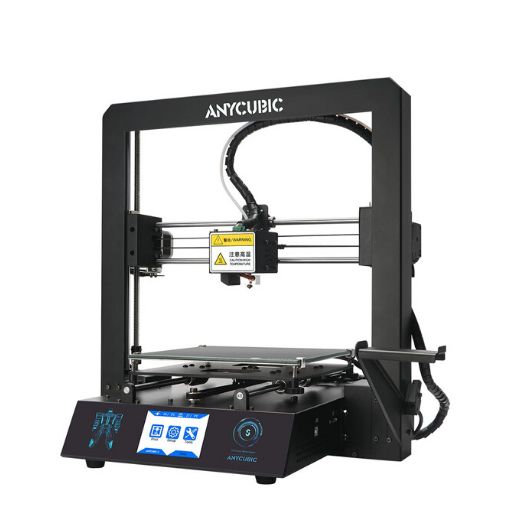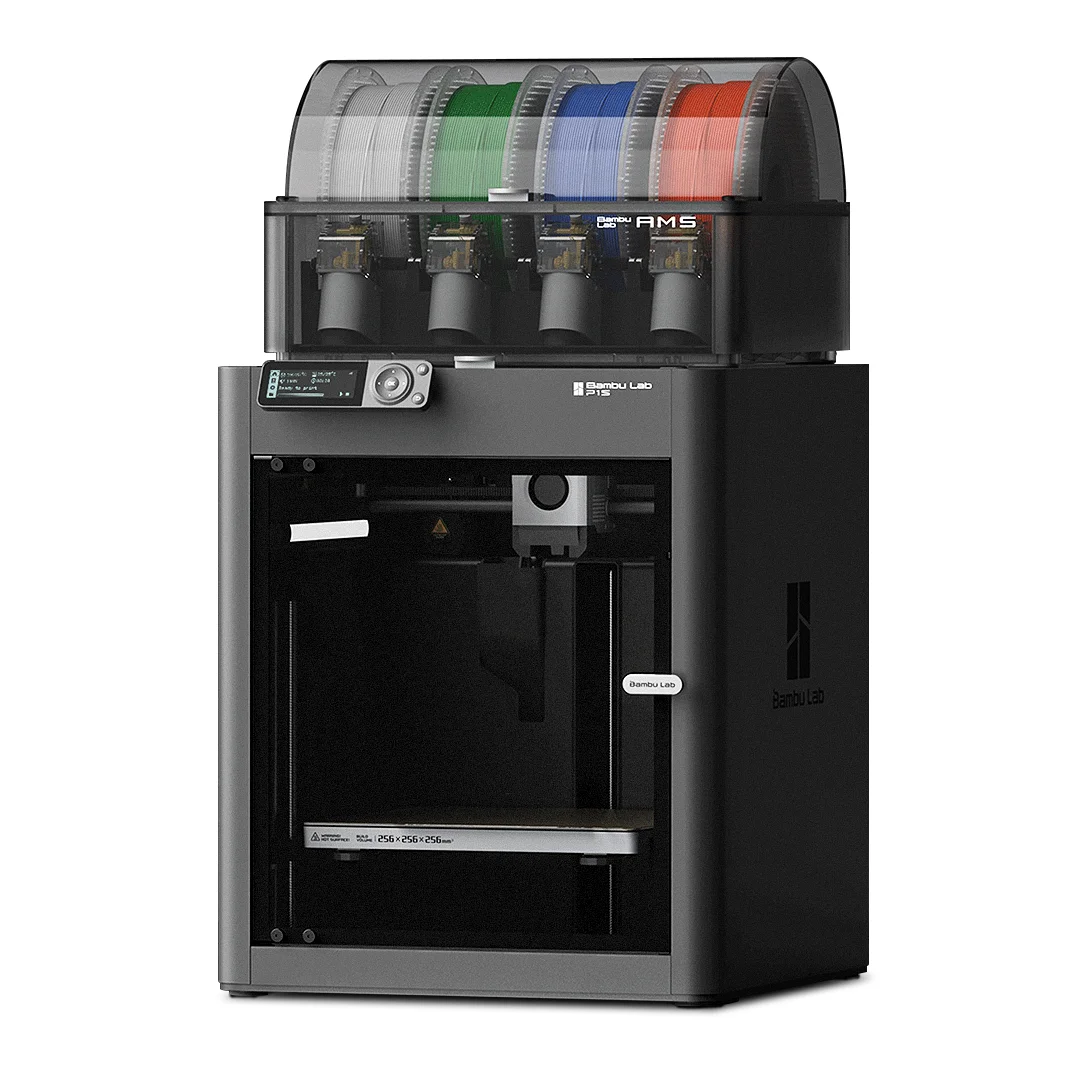Compare Mega S vs P1S
Comparison between the best 3D printers
Choose the best 3D printer at the best price. The cheapest 3D printers are here.
Buy a 3D printer here with 3D Fila.
 |
 |
|
| Model | Mega S |
P1S[BUY P1S] |
| Printing Material | Filament | Filament |
| Buy Filament for Anycubic Mega S | Buy Filament forBambu Lab P1S | |
| Estimated price | $149,00 | $949,00 |
| Manufacturer | Anycubic | Bambu Lab |
| Release Year | 2019 | 2023 |
| Print Volume [mm] | 210x210x205 | 256x256x256 |
| Printer Size [mm] | 405x410x452 | 389x389x458 |
| Weight [kg] | 14,5 | 12,95 |
| Power Loss Recovery | YES | YES |
| Enclosed printer | NO | YES |
| Bed Leveling | Manual | Automatic |
| Filament End Sensor | YES | YES |
| Bed type | Heated | Heated |
| Power supply system | Bowden | Direct Drive |
| Standard nozzle | 0,4 | 0,4 |
| Maximum Nozzle Temperature [°C] | 260 | 300 |
| Maximum Bed Temperature [°C] | 110 | 100 |
| Maximum printing speed [mm/s] | 100 | 500 |
| Filament holder | YES | YES |
| Camera for supervision | NO | NO |
| Recommended filaments | PLA, TPU, ABS, PETG | PLA, PETG, TPU, PVA, PA, PA-CF, Nylon, PC |
| Recommended slicers | Cura, Simplify, Slic3r | Bambu Studio, Super Slicer, Cura, Prusa Slicer, Orca |
| Maximum Resolution [mm] | 0,1 | 0,1 |
| Processor | 8 bits | Quad ARM A7 1.2 GHz |
| Display | Touchscreen TFT 2,8'' | Touchscreen 5'' |
| Power Supply | 12V / 300W | 350 W |
| Connectivity | SD / USB | Wifi, Bambu bus, Cartão SD |
| Operating systems | Windows, Mac, Linux | Windows, Linux, Macbook |
| Date of registration in the system | 2021-04-15 | 2024-04-11 |
| Release date | 2019 | 2023 |
| Extra features | The Anycubic Mega S offers a printing platform with excellent adhesion, easy removal after cooling. It has a filament sensor for a better experience with flexible materials and a multilingual and intuitive color touchscreen. Assembly is quick, requiring only 8 screws and 3 connections. It has a large build volume (210 x 210 x 205 mm), high positioning accuracy and supports a variety of materials, including TPU, PLA, ABS and wood. It stands out for its solid metal structure, superior stability, high-quality printing with layer resolution of up to 50 microns, Ultrabase for easy adhesion and removal of parts, resumption of printing after power outage, high-quality extruder for flexible filaments, suspended filament support and stable structure that reduces shaking, improving printing quality. | The Bambu Lab P1S stands out for its out-of-the-box practicality, eliminating the need for manual adjustments with automatic calibrations such as bed leveling and vibration compensation. It features multicolor printing capability through the AMS system, allowing up to 16 colors when connecting four AMS units. With an advanced control algorithm, the P1S offers fast printing speeds without sacrificing quality. Equipped with modern features such as filament end sensor, semi-automatic belt tension, direct extruder, welded frame and all-metal hotend, along with a fully enclosed chamber, the P1S promotes a superior printing experience, supporting a wide range of materials. |
| Support for multiple colors and materials (AMS and CFS) | NO | YES |
Notes * |
||
| Cost-benefit | 6 / 10 | 7 / 10 |
| Hardware | 2 / 10 | 6.4 / 10 |
| Tela | . | . |
| Print volume | 3 / 10 | 4 / 10 |
| Performance | 0 / 10 | 4 / 10 |
| [BUY P1S] |
Conclusion |
| In comparing the Anycubic Mega S and the Bambu Lab P1S, several key differences highlight the strengths and weaknesses of each 3D printer. The Anycubic Mega S is a budget-friendly option, appealing for its affordability and solid print performance for hobbyists and beginners. It features a decent print volume, manual bed leveling, and a range of compatible filaments while providing good print quality and reliability, making it suitable for a variety of projects. Its simplicity and ease of setup are major advantages, particularly for those new to 3D printing. On the other hand, the Bambu Lab P1S, while significantly more expensive, offers advanced technology and features that significantly enhance the user experience and printing efficiency. Its automatic bed leveling and faster print speeds combined with modern connectivity options like WiFi and an automatic material system for multi-color printing make it a powerhouse for both professional and serious enthusiast users. The enclosed design provides better temperature control, which is beneficial for printing with a wider range of materials. In terms of cost-to-benefit ratio, the Anycubic Mega S offers a reasonable introduction into 3D printing for those on a budget, while the Bambu Lab P1S, with its superior performance and capabilities, delivers a more advanced, versatile experience for those willing to invest more into high-quality output and convenience. Ultimately, the choice between the two printers depends largely on the user’s specific needs—whether looking for an economical entry point into 3D printing or a high-performance machine with robust features for more demanding applications. |

